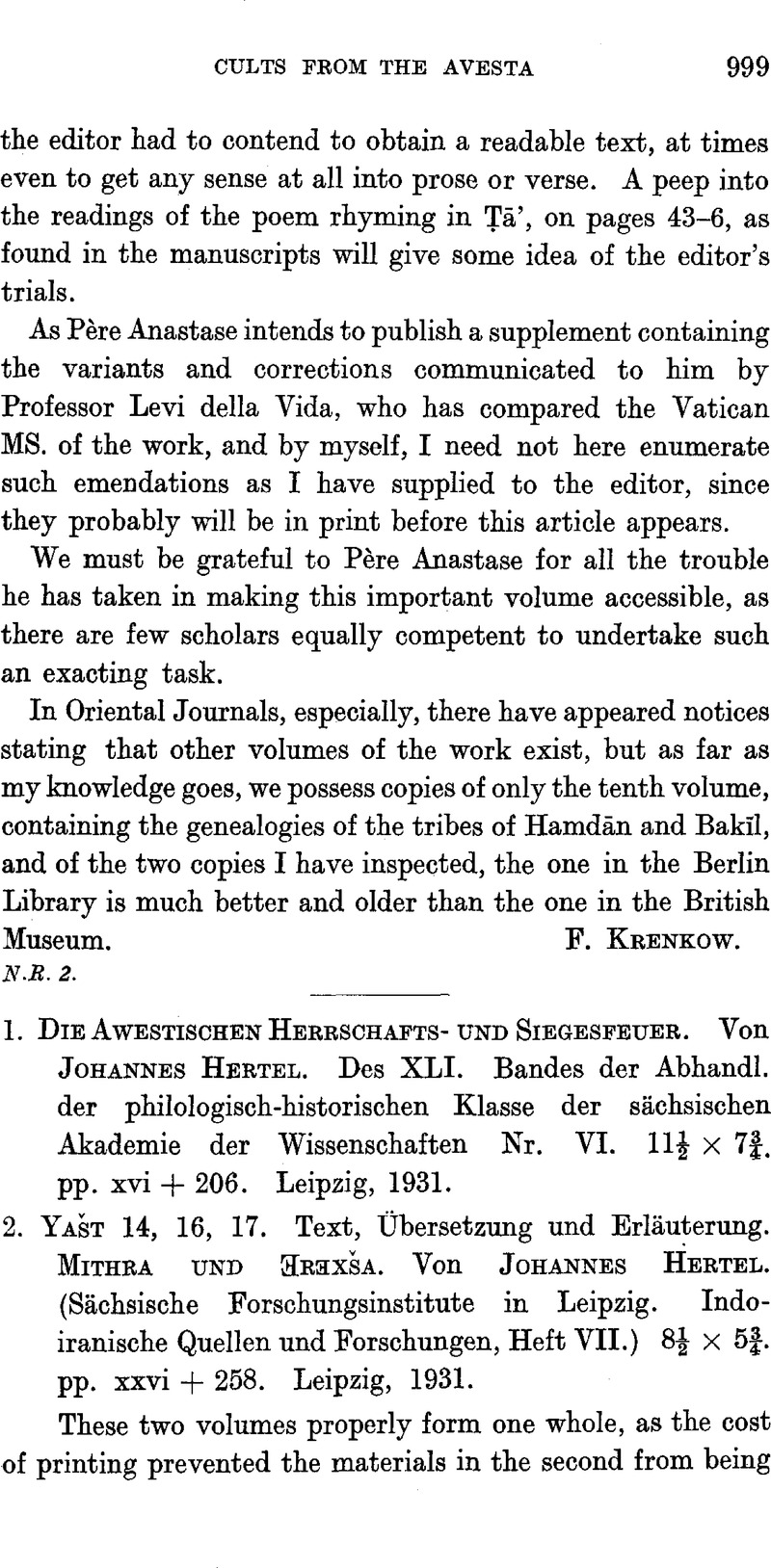No CrossRef data available.
Article contents
2. Yašt 14, 16, 17. Text, Übersetzung und Erläuterung. Mithra und ƎrƏxša. Von Johannes Hertel. (Sächsische Forschungsinstitute in Leipzig. Indoiranische Quellen und Forschungen, Heft VII.) 8½ × 5¾. pp. xxvi + 258. Leipzig, 1931.
Published online by Cambridge University Press: 15 March 2011
Abstract

- Type
- Notices of Books
- Information
- Copyright
- Copyright © The Royal Asiatic Society 1932
References
page 1000 note 1 I may call attention to my reviews of previous works by him in JRAS.,1928, p. 180 ff., and 1930, p. 440 ff.
page 1000 note 2 Dr. Hertel points out that in the older RV. x'arƏnah- is termed bráhma (Φλέλυα) and śávas, later also tejas; in RV. this bráhma is claimed not only for poet-priests but also for warriors, and later, in the period of the older Upanisads, when the struggle for pre-eminence between these two classes was settled, the former claimed bráhma for themselves, styling themselves brāhmanas, possessors of the heavenly fire, while the warriors termed the x'arƏnah- characteristic of their class tejas.
page 1003 note 1 Among such are perhaps some features in his restoration of the Avestan texts, in which we could wish to see definitely formulated a general standard for transliteration and correction of later spellings: while he restores some early spellings, e.g. the ending -ām, he leaves untouched many forms of vocalism which, as he seems to suggest (IIQP. VII, p. xxv), may perhaps be late. Sometimes, too, the adjustment of words to the metrical scheme may provoke some doubt: possibly there may have been pluta vowels in early Avestan poetry, which would resolve some difficulties in scansion. The word daēnā, I think, ought to be written when trisyllabic, dayinā (cf. srayišta- from sraēšta-), and not dayanā. The etymological connection of “Harrūt” (AHSF., p. 16) may be doubted; so perhaps may be the force of the argument ibid., p. 82, line 1.


